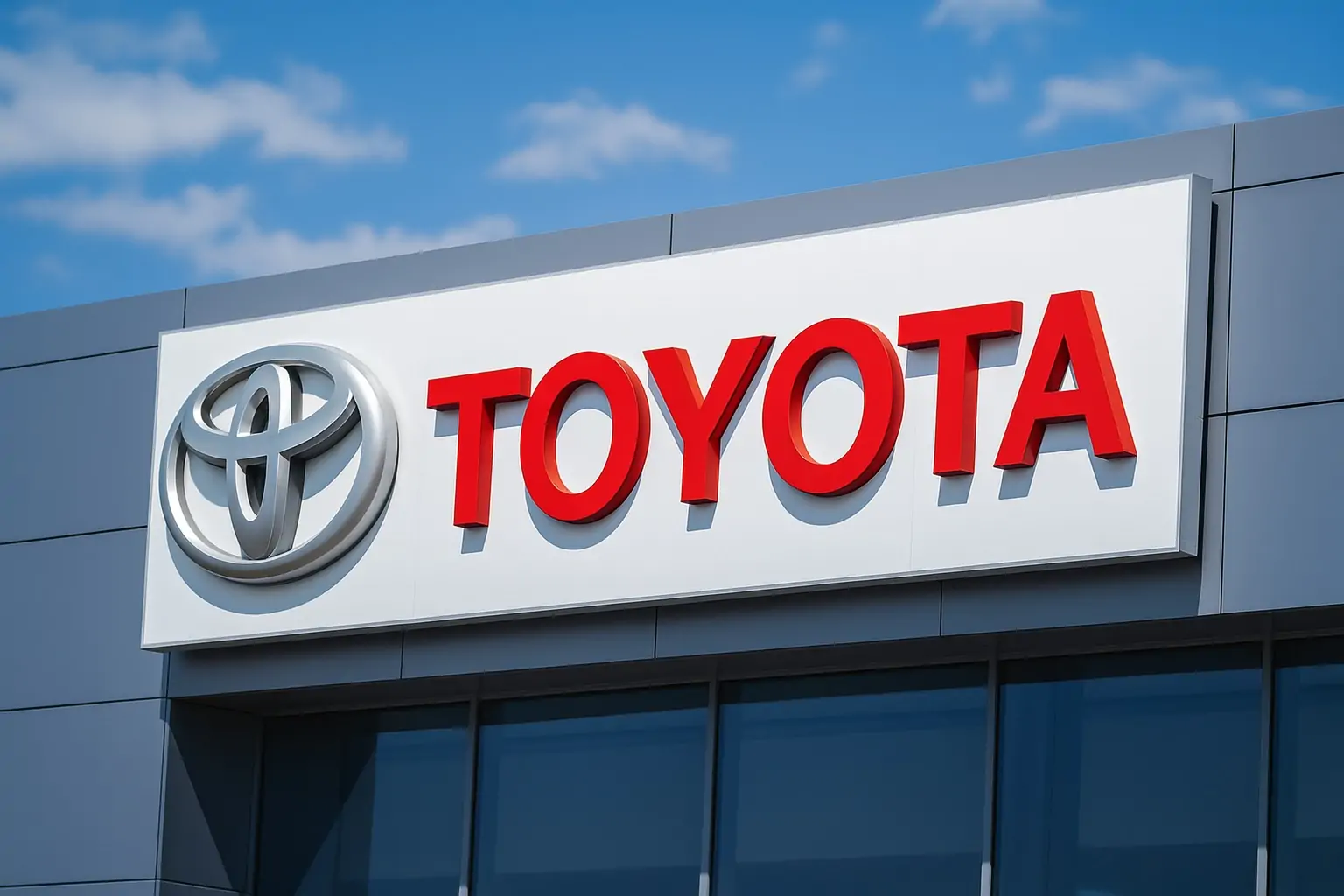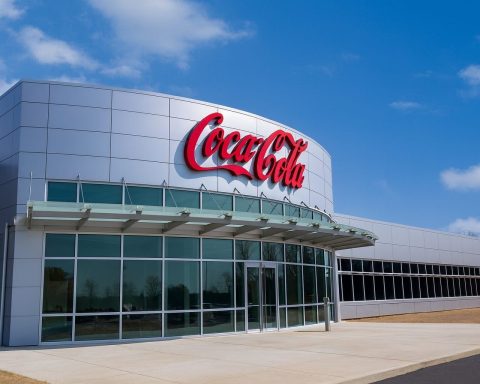On November 19, 2025, Toyota boosts U.S. hybrid output with a $912M investment as Koji Sato’s dealer‑first, multi‑pathway strategy reshapes the EV race and investor opportunities.
On November 19, 2025, Toyota Motor Corp. capped a pivotal year for its hybrid‑focused strategy by announcing a fresh $912 million investment to expand hybrid production at five U.S. plants, reinforcing a broader $10 billion domestic manufacturing plan through 2030. [1]
The move lands as global EV growth cools, hybrid sales accelerate, and CEO Koji Sato’s dealer‑centric, “multi‑pathway” approach increasingly looks like the playbook rivals wish they had followed. [2]
At the same time, investors digesting the latest round of automotive earnings reports are zeroing in on the same themes. A recent breakdown from Futunn and Kabushiki Shimbun argues that the most compelling opportunities now cluster around three buckets: the Toyota Group ecosystem, hybrid vehicles and motorcycles. [3]
Today’s Toyota headlines for November 19, 2025
Here are the key Toyota‑related developments shaping the conversation today:
- $912M for U.S. hybrid production Toyota will invest $912 million across five southern U.S. plants, expanding output of hybrid‑compatible engines and Corolla hybrid models and creating 252 new jobs. The largest slice — about $453 million — goes to its Buffalo, West Virginia powertrain plant, with additional funds earmarked for Georgetown, Kentucky and Blue Springs, Mississippi, among others. [4]
- “Build where we sell” and a 51% hybrid share The new spending is part of Toyota’s stated philosophy to localize production where its customers are, and it supports a hybrid franchise that now commands more than 51% of the U.S. hybrid market through the third quarter of 2025, according to industry data cited in CBT’s coverage. [5]
- Battery mega‑project comes online in North Carolina Earlier this month, Toyota began production at its first U.S. battery plant in Liberty, North Carolina — a roughly $14 billion complex expected to underpin future hybrid and EV output in North America and play a central role in de‑risking its U.S. supply chain. [6]
- Urban Cruiser Hyryder recall Not all the headlines are positive. In India, Toyota has recalled over 10,000 Urban Cruiser Hyryder SUVs built between December 9, 2024 and April 29, 2025 to fix a faulty fuel‑level indicator — a reminder that quality and reputation remain crucial as the company scales its hybrid footprint. [7]
Collectively, these stories show Toyota not just defending its hybrid lead, but reinforcing it with bricks‑and‑mortar investments while tightening the loop between strategy, dealers and manufacturing.
EV slowdown, hybrid surge: why Toyota’s 2025 strategy looks prescient
The global EV story is no longer a straight‑line rocket ship.
- The International Energy Agency’s Global EV Outlook 2025 notes that electric car sales grew only about 10% in 2024, down sharply from roughly 40% in 2023 — even as EVs climbed to more than 10% of the U.S. light‑vehicle market. [8]
- By Q3 2025, fully electric vehicles still posted around 35% year‑on‑year growth, and for the first time on record, more than one in five vehicles sold globally were BEVs, according to Strategy& and PwC. [9]
So EVs are still growing fast in absolute terms — but slower than many capacity plans assumed, especially in markets where incentives are fading and charging anxiety lingers.
Meanwhile, hybrids are having a moment:
- A recent industry note highlights that hybrid sales have surged in Europe, with electrified growth strongly supported by brands like Toyota and Ford. [10]
- EY’s Mobility Lens forecasts hybrids could account for around 34% of all U.S. passenger‑vehicle sales by 2034, with hybrid volumes expected to top 3 million units annually as soon as 2026. [11]
In this context, Toyota’s much‑criticized caution on all‑electric vehicles looks less like foot‑dragging and more like risk management.
The “1–6–90” philosophy
In a recent “Future of Automotive” segment on CBT News, analyst Steve Greenfield revisited Toyota’s internal “1–6–90” rule: the battery minerals needed for a single long‑range BEV could instead be spread across several plug‑in hybrids or dozens of conventional hybrids, potentially delivering far more total CO₂ reduction worldwide from the same raw materials. [12]
That logic underpins Toyota’s multi‑pathway strategy:
- keep investing in battery‑electric vehicles (with a plan to launch 15 EVs and target 1 million EV sales annually by 2027),
- while mass‑scaling hybrids and plug‑in hybrids to reach cost‑sensitive and infrastructure‑constrained customers today,
- and continuing to experiment with hydrogen and other alternatives in selected segments. [13]
With EV demand below early‑decade hype, this diversified approach now looks like a hedge that’s paying off.
Koji Sato’s dealer‑first, multi‑pathway playbook
When Koji Sato took over from Akio Toyoda, many expected him to slam on the accelerator for BEVs. Instead, he doubled down on a theme that runs through Toyota’s recent coverage: win with dealers and let the product portfolio match real‑world demand, not headlines. [14]
Key elements of Sato’s playbook, as reflected in recent reporting and commentary:
- Dealer‑centric growth
Toyota has resisted the temptation to overbuild its retail network in the U.S. CBT notes that each Toyota franchise tends to sell more vehicles than many rivals, supporting profitability and resilience when incentives or demand wobble. [15] - “Build where we sell” manufacturing
Both Toyota’s new $912M hybrid investment and its $14B North Carolina battery plant are framed as part of a long‑standing “build where we sell” philosophy — a buffer against tariffs, logistics shocks and political pressure to localize jobs. [16] - Steady, not flashy, EV rollout
Instead of leaping straight to an all‑EV lineup, Sato ordered a rethink of the EV roadmap earlier this year: dedicated platforms and better software for Toyota’s next‑gen BEVs, but on a timetable that doesn’t strand dealers or customers. [17]
AutoNews’ own framing of Sato’s leadership emphasizes that strong dealer relationships and a balanced product mix have helped Toyota maintain record‑level profitability despite tariff uncertainty and the bumpy EV transition. [18]
In other words, Sato hasn’t abandoned EVs — he’s sequencing them around a profitable hybrid core.
Inside the earnings: why analysts keep coming back to Toyota Group, hybrids and motorcycles
The latest earnings season has turned into a stress‑test of every automaker’s electrification narrative.
A widely circulated analysis on Futunn, drawing from Kabushiki Shimbun, flags three key themes for investors scanning the sector:
1. Toyota Group 2. Hybrid vehicles (HV) 3. Motorcycles. [19]
Some highlights from that coverage:
- Hybrids propping up Toyota’s outlook
The piece notes that first‑half results for the fiscal year ending March 2026 show robust hybrid sales helping offset a slowing EV market, supporting Toyota Motor’s earnings even as peers feel the pinch. [20] - Guidance still strong, even after a cut
Toyota is now forecasting about 3.4 trillion yen in consolidated operating profit, roughly a 29% decline from last year’s exceptionally strong base, but still a level most global rivals would envy. [21] - Tariffs and chips hitting others harder
High U.S. tariffs and lingering semiconductor shortages have forced Honda to cut its earnings forecast, underscoring how exposed some competitors are to trade and supply shocks. [22] - Toyota Group suppliers riding the wave
Group‑linked names like Denso, Aichi Steel, Toyoda Gosei and Mitsui High‑tech feature in the analysis as potential beneficiaries of a sustained hybrid cycle, thanks to their deep integration into Toyota’s value chain. [23] - Motorcycles as an emerging demand story
The same report points to motorcycle growth in emerging markets as a parallel theme, particularly where two‑wheelers are crucial mobility tools and hybrid or efficient ICE technology can move the emissions needle quickly. [24]
The combined message: in a world where EV demand is real but uneven, earnings resilience increasingly comes from flexible product portfolios and deep supply‑chain ecosystems — areas where Toyota is unusually strong.
November 19’s $912M bet: how it fits into the bigger picture
Today’s investment announcement is more than a one‑day headline; it’s a signal of how Toyota expects the next decade to unfold.
1. Locking in hybrid capacity while EV demand normalizes
By channeling funding into hybrid‑compatible engine lines and Corolla hybrid production, Toyota is effectively saying that hybrid demand will stay elevated well into the 2030s, not just as a stopgap. That view aligns with EY’s long‑range forecast for hybrids’ rising market share in the U.S. [25]
If the market keeps drifting toward a “hybrid + affordable EV” mix — as recent AInvest analysis suggests — Toyota’s newly expanded footprint should allow it to capture volume without sacrificing margins. [26]
2. De‑risking supply with the North Carolina battery hub
The Liberty, North Carolina battery plant, which began production this month, is the other half of the equation. A $14B facility doesn’t just supply packs; it gives Toyota:
- more control over battery costs and chemistry,
- leverage in negotiating with cell suppliers and raw‑materials partners, and
- a hedge against tariff or shipping disruptions affecting imported batteries. [27]
From an investor’s standpoint, that’s a classic short‑term margin headwind / long‑term moat trade‑off, as SimplyWallSt has pointed out in its coverage of the plant’s impact on Toyota’s returns. [28]
3. Maintaining reputation while scaling
The Urban Cruiser Hyryder recall shows one of the risks of scaling quickly: even a relatively limited defect (in this case, a fuel‑level indicator issue) can become a headline that undercuts Toyota’s image for bulletproof reliability. [29]
How cleanly Toyota executes that recall — and how many more issues emerge as hybrid volumes ramp — will be watched closely by both customers and regulators.
What it all means for investors and competitors
For investors, today’s news reinforces a few takeaways:
- Hybrids are not going away
Market data and third‑party forecasts increasingly support the idea that hybrids will be a structural part of the powertrain mix, not just a bridge to a 100% BEV world. Toyota is positioning itself as the category owner of that segment. [30] - Toyota Group remains a system‑level bet on this thesis
From Toyota Motor itself to suppliers like Denso, Aichi Steel and Toyoda Gosei, the group offers multiple ways to express a view on hybrid‑heavy electrification, as highlighted in the Futunn earnings review. [31] - Motorcycles and emerging‑market demand shouldn’t be ignored
As analysts point out, motorcycles in high‑growth economies are another crucial vector for fuel‑efficiency and hybrid tech — and a theme that tends to move somewhat independently of the U.S./European EV cycle. [32]
For rivals, the signal is blunt: all‑in EV strategies will be judged against Toyota’s hybrid‑first profitability. Automakers that over‑invested in BEV capacity may now find themselves playing catch‑up in hybrids, even as they scramble to fix software, charging and residual‑value challenges on their EVs.
Bottom line
On November 19, 2025, Toyota’s latest $912 million U.S. investment crystallizes three intersecting stories:
- A global auto market where EV growth is real but bumpier than expected,
- A hybrid boom that validates Toyota’s long‑term multi‑pathway strategy, and
- An earnings landscape where Toyota Group, hybrids and motorcycles sit at the heart of many analysts’ opportunity sets.
Add Koji Sato’s dealer‑first execution and aggressive U.S. manufacturing push, and Toyota doesn’t just look like a survivor of the EV reset — it looks increasingly like the benchmark everyone else has to beat.
This article is for informational purposes only and does not constitute financial or investment advice.
References
1. www.cbtnews.com, 2. www.iea.org, 3. news.futunn.com, 4. www.cbtnews.com, 5. www.cbtnews.com, 6. simplywall.st, 7. www.carandbike.com, 8. www.iea.org, 9. www.strategyand.pwc.com, 10. www.ainvest.com, 11. www.utilitydive.com, 12. www.cbtnews.com, 13. headlight.news, 14. www.facebook.com, 15. www.cbtnews.com, 16. www.cbtnews.com, 17. headlight.news, 18. www.facebook.com, 19. news.futunn.com, 20. news.futunn.com, 21. news.futunn.com, 22. news.futunn.com, 23. news.futunn.com, 24. news.futunn.com, 25. www.cbtnews.com, 26. www.ainvest.com, 27. simplywall.st, 28. simplywall.st, 29. www.carandbike.com, 30. www.utilitydive.com, 31. news.futunn.com, 32. news.futunn.com










